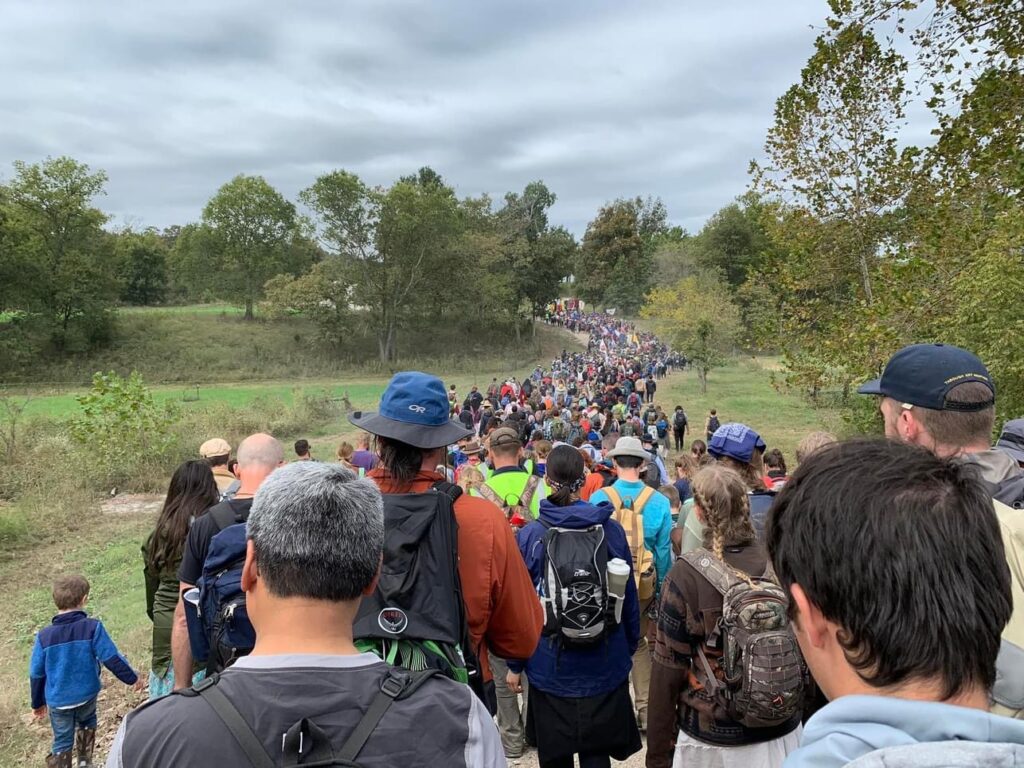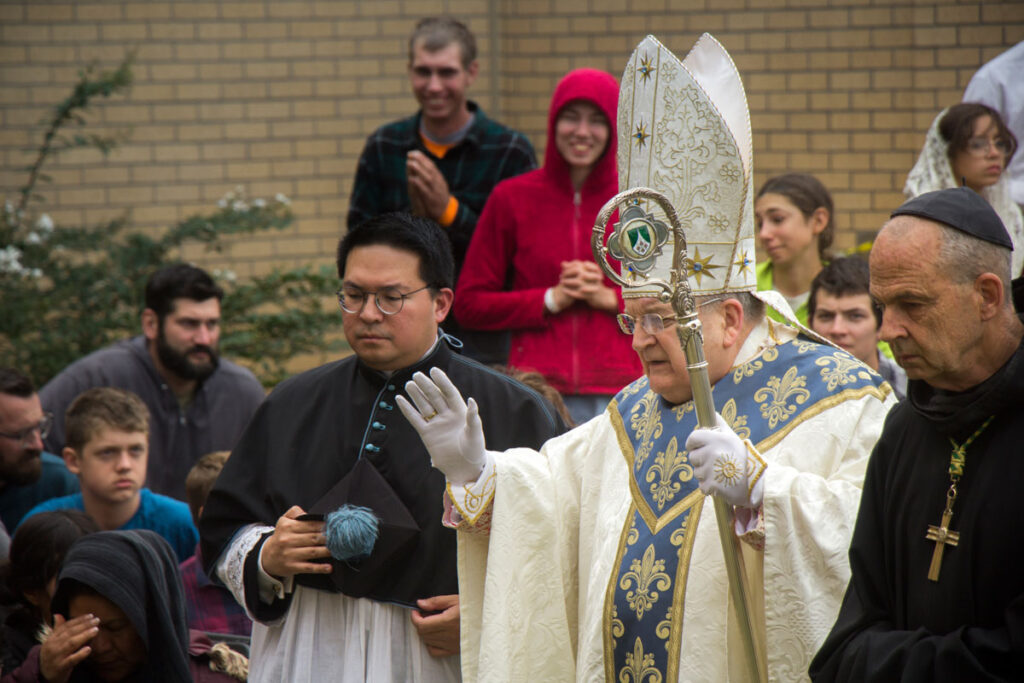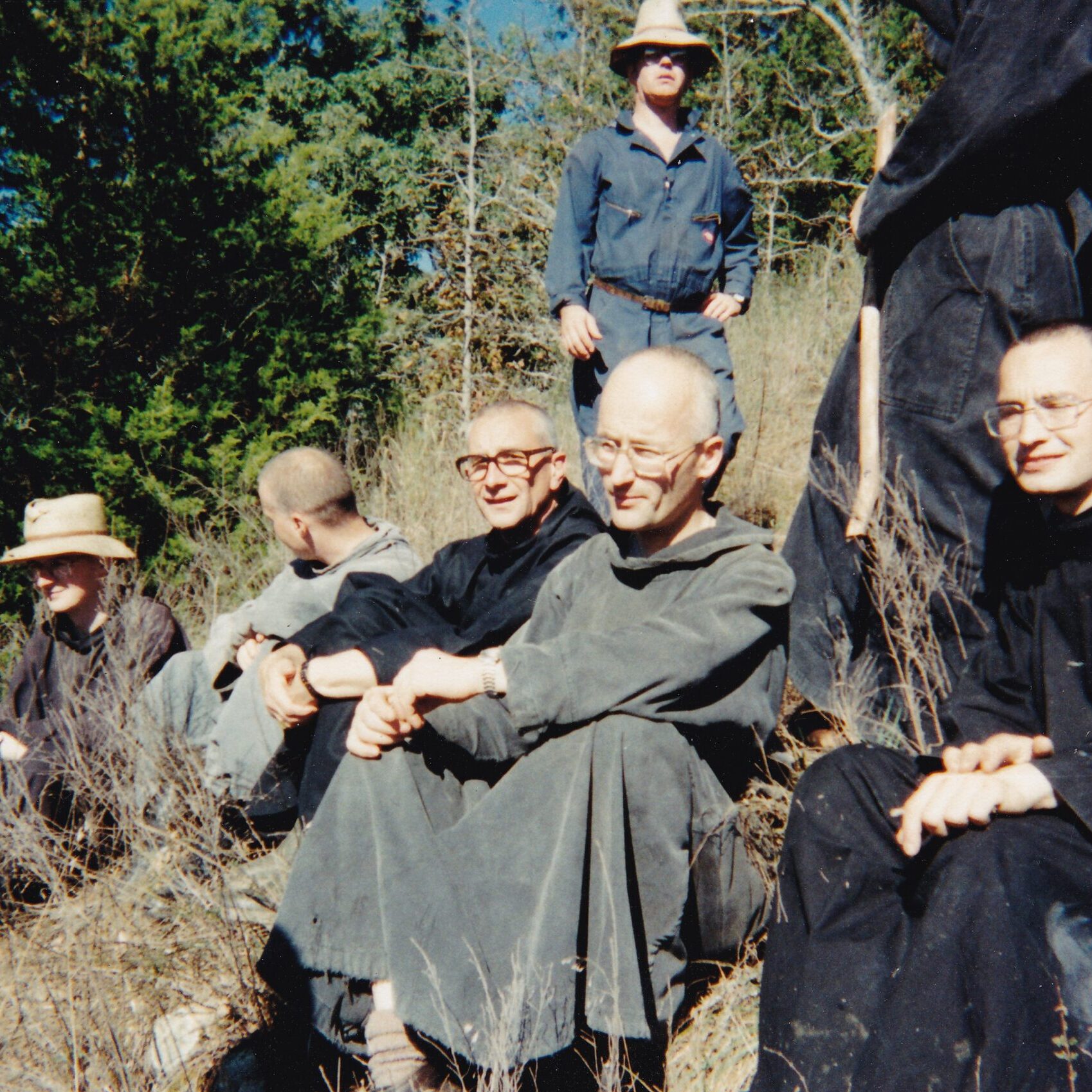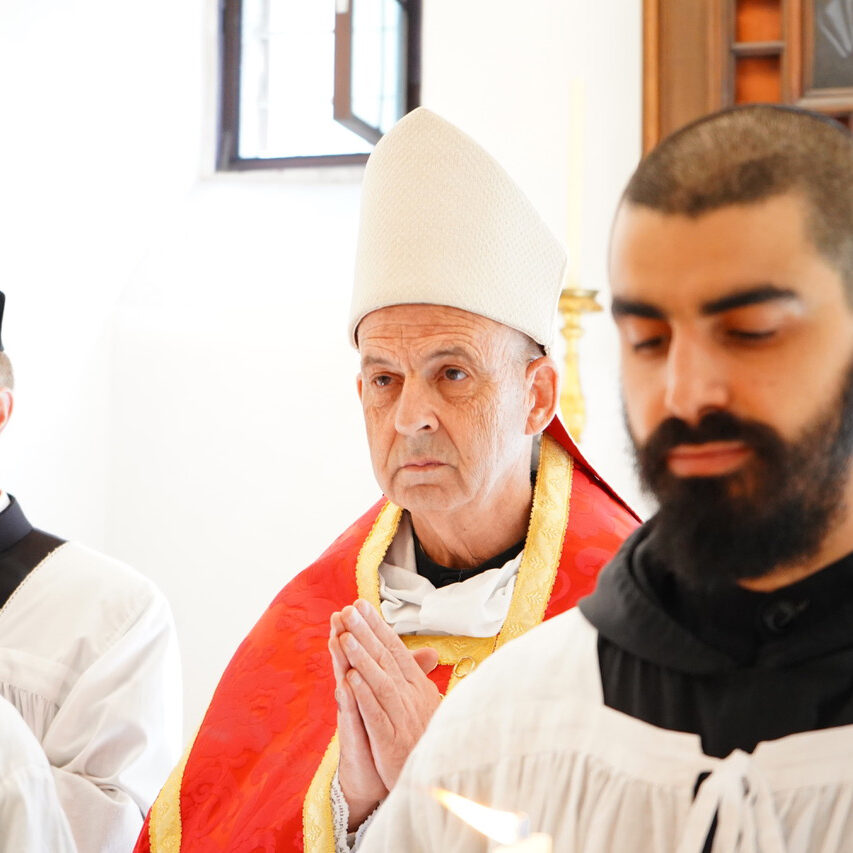Dear Friend of Clear Creek Abbey,
From October 12th through October 14th, under the patronage of the Sacred Heart of Jesus, the Immaculate Heart of Mary, and the Most Chaste Heart of Joseph, the Three Hearts Pilgrimage made its way again this year over some 35 miles of rough terrain, through the back roads of Cherokee County, to our abbey church. His Eminence Raymond Leo Cardinal Burke was here to preside over the final solemn Mass and to consecrate the Pilgrimage to those Three Hearts.
Pilgrims arrived at the starting point from every part of the United States and even from Europe (Scotland!). Since its inception, the Pilgrimage has constantly gained momentum, and the numbers have greatly increased. In 2021 there were about one thousand pilgrims; this year that number was more than doubled. The event has truly become a Catholic moment. How do you explain the increase and the enthusiasm? How do you explain the progress of the event? It seems to have become a kind of new movement within the Chronos and Kairos of what we call “time.”

Over 2,000 pilgrims make their way to Clear Creek abbey church.
The word “progress” derives from Latin and denotes the action of walking forward. Pilgrims literally make “progress” with each “step” (gressus in Latin). They thus provide us with an image of what is and should be true “progress.” As we live in a time of increasing confusion about things both great and small, the simple action of going on a pilgrimage can be a revelation. Unlike wanderers, pilgrims are going somewhere: there is a destination, a goal: in our present case, the Clear Creek abbey church. On a spiritual plane, the meaning of this walking is that it signifies a journey home, not just to a temporary home, but to our true and final home in Heaven. This Catholic moment is of particular importance in an era when Catholics throughout the world are experiencing increasing persecution, and when doctrinal confusion has become all too prevalent. Catholics are feeling the need to get out and move physically in a way that allows them to affirm their Catholic faith without ambiguity or compromise.
The journey is hard, however. Pilgrims almost always develop blisters and undergo various physical ailments and fatigue. It truly becomes an adventure, rather than a simple form of recreation or mere pleasure.
Cardinal Burke summarized well the meaning and the moment in his homily for the concluding Mass:
Pilgrimage is a most ancient form of the devotional life by which we draw upon the grace of our sacramental encounters with Christ to live in Christ at every moment of the day. Going on pilgrimage, we leave the ordinary circumstances of our daily living to discover anew the extraordinary nature of those ordinary daily circumstances, because they are lived in Christ. When our hearts, one with the Immaculate Heart of Mary, True Spouse of Saint Joseph and Mother of God the Son Incarnate, and under the fatherly care of the Purest Heart of Saint Joseph, True Spouse of the Virgin Mary and Virginal Father of Jesus, rest in the Divine Heart, the Sacred Heart of Jesus, they are purified of sin and fortified with Divine Love.
The music was enhanced this year with the contribution of the fine polyphonic choir coming from Gregory the Great Academy and a guest organist. Many other Catholic schools were represented, including Christendom College, Saint Martin’s Academy, and Benedictine College.
After the Pontifical Mass, Cardinal Burke spent quite a long time greeting the pilgrims. Being now, with age, physically less strong, he had to sit in a chair, while a never-ending line of men, women, and children approached to ask his prayers and blessing. His Eminence told me the next day how moved he was to see so many young people and families, and to encounter a large number of the young adults requesting him to pray for them as they contemplate a vocation to the priesthood or to the consecrated life.
The Three Hearts Pilgrimage brings a rather considerable disturbance to the silence and tranquility of our contemplative monastery, but God seems to want us to welcome it, as we see so many fruits of the grace that was so visible, almost palpable, in the vast crowd! We can only hope the authentic spiritual renewal and rejuvenation that is manifested by the Pilgrims will continue to move hearts and minds to grow in the love of Christ and His Church at a time when this is so much needed.
br. Philip Anderson, abbot







